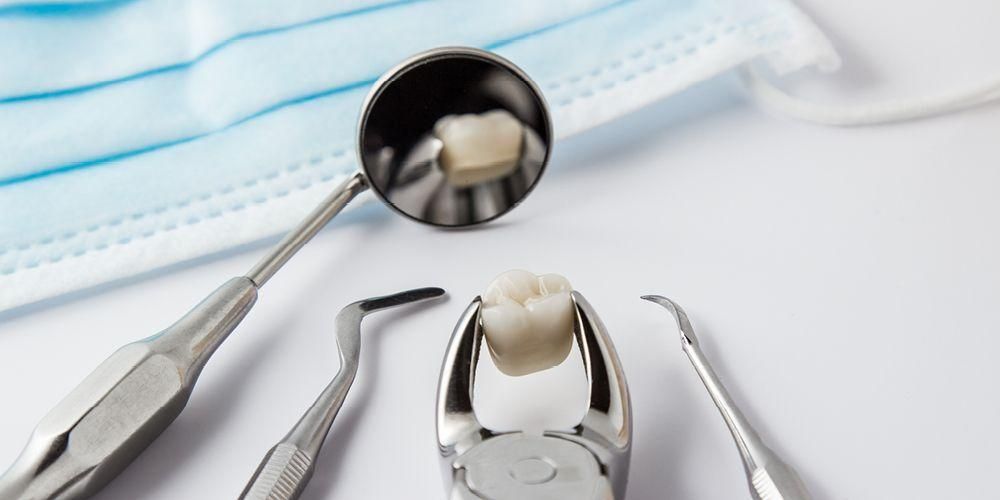Diabetes mellitus, is a systemic disease caused by excessive blood sugar level. Diabetes mellitus is divided into several types, the most frequently found is type II diabetes mellitus. The International Diabetes Federation (IDF) states that as many as 8.8% of the world’s population of around 425 million people suffer from Diabetes Mellitus (DM) in 2017. Indonesia is a country with the seventh prevalence of diabetes in the world with 10.3 million sufferers and 2045; it is estimated that DM sufferers in Indonesia will be as many as 16.7 million people.
Diabetes mellitus (DM) is a systemic disease that has effects on all parts of the body, including the teeth and jaw bones. In general, tooth extraction in patients with DM is safe as long as blood sugar is controlled and there are no other complications. After tooth extraction, the patient will be treated with dentures that require a good jaw bone as a base for dentures. However, in patients with DM, the wound healing process after tooth extraction often hampered, so that it can affect the process of making artificial teeth.
This healing process disorder is caused by the impaired function of cells responsible for the healing process, macrophages and neutrophil. This unbalanced condition in people with DM results in increased expression of inflammatory triggering substances in the body (pro-inflammatory cytokines) such as interleukin-1β, interleukin-10, and tumor necrosis factor-alpha (TNF-α). Rising levels of pro-inflammatory cytokines cause a decrease in anti-inflammatory cytokines so that the inflammatory process lasts longer which results in uncontrolled tissue damage.
Disruption of the healing process after tooth extraction in patients with DM can result in the disruption of the process of making artificial dentures, especially if a dental implant is planned because it requires good bone conditions to obtain optimal results. In certain conditions, such as in patients with systemic abnormalities such as DM, the available bone is not high or solid enough due to the disrupted healing process. Therefore, the socket preservation method is known, the addition of bone graft (bone powder) to the tooth extraction socket to assist the process of bone regeneration. In addition to the addition of bone graft, preservation of the socket can also be done by adding materials that can help the process of bone regeneration.
Currently there are many studies that develop various herbal materials with anti-inflammatory properties and can accelerate the healing process, and bone regeneration. Some of these materials include spirulina and chitosan which have benefits for preservation of the socket. Spirulina is blue-green algae often used in the food industry because it is rich in amino acids, essential fatty acids, and antioxidants. C-phycocyanin and β-carotene contained in Spirulina are proven to have anti-inflammatory, immunomodulatory, anti-oxidant, and anti-cancer properties. Chitosan is a derivative of chitin, a substance that makes up the structural components of crab shells, shrimp, and fungal cell walls. Hydrolyzed forms of chitosan called N-acetyl-D-glucosamine oligomer (NACOS) and D-glucosamine oligomer (COS) are known to have anti-inflammatory and anti-cancer properties. Previously, a study conducted by Salim et al in 2015 stated that the combination of 12% spirulina and 20% chitosan can accelerate the healing process of the socket after tooth extraction by increasing osteoblasts and reducing osteoclast production.
Our team conducted further research to prove the effect of spirulina 12% and chitosan 20% combination on healing after tooth extraction. In this study, we examined its effects on cytokines that play a role in the inflammatory process, namely Interleukin Beta (IL-β), Tumor Necrosis Factor Alpha (TNF-α), and Interleukin 10 (IL-10). This study used 36 male Rattus norvegicus mice, aged three months, which were divided into 6 groups. The animal was given medication so that they have DM, then the mandibular incisors were extracted, and in the former retraction socket were given CMCNa as a control.
The treatment group was given a combination of Spirullina gel 12% and chitosan 20%. In the control group, the animal K1 group was euthanized one day after, the K2 group was euthanized 3 days after, and the K3 group was euthanized 7 days after that. In the treatment group, group P1 was euthanized 1 day after, group P2 was euthanized 3 days after, and group P3 was euthanized 7 days after tooth extraction. After that, the results are analyzed statistically, they showed that the combination of spirullina 12% and chitosan 20% can reduce levels of pro-inflammatory cytokines such as TNF-α and IL-1β because both materials have anti-inflammatory properties through the mechanism of NF-κβ block. Furthermore, the combination of spirullina 12% and chitosan 20% had a significant effect on the first day treatment group.
In conclusion, the combination of spirulina gel 12% and chitosan 20% is effective in suppressing pro-inflammatory cytokines so it can be a material used for the preservation of socket after tooth extraction thereby increasing bone density. The results of this study are expected to provide alternative materials for preservation of socket to maintain the density of the jawbone before making dentures.
Author: Dr. Nike Hendrijantini., Drg., MKes., Sp.Pros (K) detailed information of this study can be seen in:
https://doi.10.15562/bmj. https://www.balimedicaljournal.org/index.php/bmj/article/view/1625 v9.1625
Hendrijantini, Nike;Sitalaksmi, Ratri Maya; Ari, Muhammad Dimas Aditya; Hidayat, Tiffany Josephine; Putri, Prisca Agustina Nurcahyani; Sukandar, Daniel. (2019). The expression of TNF-α, IL-β, and IL-10 in the Diabetes Mellitus Condition Induced by the Combination of Spirullina and Chitosan. Bali Med J. 2020; 9(1): 22-26. https://doi.10.15562/bmj.v9.1625





